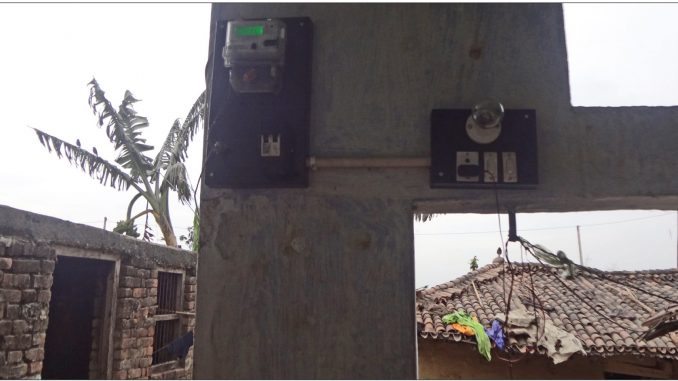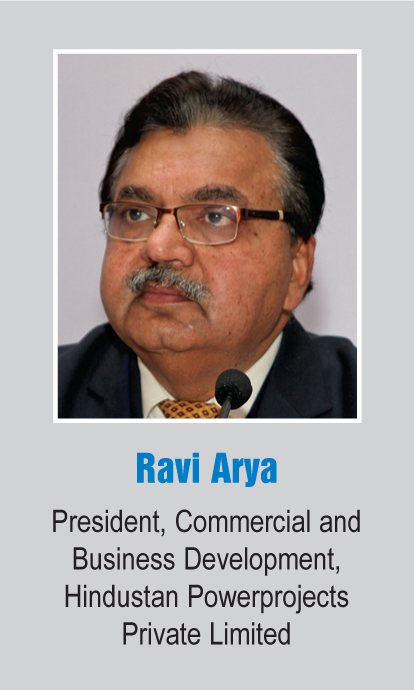
The recently presented Union Budget 2016-17 has struck a positive chord with stakeholders, with the majority of them welcoming the government’s initiatives for the energy sector. It has tried to consolidate the reform processes initiated in the sector during the past year and achieve energy security for the country in the long run. Industry experts share their views on the budget…
What are the key budget highlights for the power sector? Has the budget adequately addressed the industry’s concerns?
Overall, the budget has a positive intent for the energy sector, except for the increase in the national environment cess, which has been doubled to Rs 400 per tonne and is likely to have an adverse impact. It has refrained from introducing big-bang measures and focused on consolidation to achieve energy security in the country. The aim to have a comprehensive nuclear power generation plan over the next 15 to 20 years has brought this important resource into mainstream focus apart from renewables, which is a good move as it would reduce India’s fascination for a single fuel and bring in a holistic approach that is required to achieve energy security. The budget has provided for an outlay of Rs 30 billion per annum for nuclear power. In addition, permitting calibrated market pricing for new discoveries and exploration of deep-water and difficult gas basins is a real positive as this has been a long-standing demand of the industry, given the current low oil price scenario.
However, it is disappointing that there are no concrete measures to resolve the issue of stressed assets directly. It was expected that a specialised turnaround for stressed funds would be put in place. Although the budget has reiterated the intent to resolve commercial disputes and talked about having guidelines for renegotiation of public-private partnerships (PPPs), besides enhancing the power of institutions under the Securitisation and Reconstruction of Financial Assets and Enforcement of Security Interest Act, these may not lead to faster resolution of the stressed asset problem in the short term.
The increase in the clean environment cess will have a negative impact on the sector. While it is good from the overall environment perspective, it goes against the stated intent to reduce the cost of power to industry (the per unit impact of the increase would roughly range from 12 paise to 16 paise per unit).
As stated, the target of 100 per cent village electrification would be achieved by May 1, 2018 (earlier than envisaged), which when seen together with the RURBAN initiative, launched recently to create growth centres in rural areas, may lead to an increase in demand for power from these unserved clusters over the medium term. Another interesting resource generation measure for making new investments pertains to the divestment of assets by central public sector enterprises. If implemented well, this could lead to significant generation of resources outside the normal equity divestment window. However, a slight dampener for the renewable energy sector is the accelerated depreciation (AD) benefits being restricted to 40 per cent from April 1, 2017, in line with the direction outlined by the finance minister with respect to the reduction in corporate tax rates while doing away with various tax exemptions. But the increase in the clean environment cess by Rs 200 per tonne would help push more funds into the renewable sector and provide an impetus to realise the ambitious government vision for this sector.
The Union Budget 2016-17 seems to be in sync with the government’s developmental agenda as it lays significant emphasis on rural infrastructure. Some measures announced in this budget may appear a bit conservative in hindsight, but I feel these would boost the ailing power sector in the long run. The key highlights of the budget for the power sector are:
- 100 per cent village electrification by May 1, 2018.
- Increase in the clean energy cess on coal from Rs 200 per tonne at present to Rs 400 per tonne.
- Incentives for gas production from deep water, ultra-deep water and high pressure-high temperature areas, currently not exploited on account of higher costs and higher risks.
- Reduction in the accelerated depreciation benefit for renewable energy investments from 80 per cent to 40 per cent.
- Public Utility (Resolution of Disputes) Bill to be introduced to streamline institutional arrangements for the resolution of disputes in public utility contracts.
We need to appreciate the fact that the proposals in this budget have been announced with a long-term perspective for the much-needed revival of the sector. The government’s pledge for 100 per cent village electrification over the next two years, the ongoing Ujwal Discom Assurance Yojana initiative, etc. are all aimed at improving the discoms’ financial health and unlocking the latent power demand in the country. This would not only give an immediate impetus to the transmission sector, but would also provide a major boost to fresh generation capacity addition. The Rs 200 per tonne increase in the clean energy cess on coal may lead to a marginal increase of around 10 paise per unit in coal-based power generation costs; however, we need to acknowledge that this is likely to lead to an income of around Rs 250 billion to the public exchequer, which is understood to be utilised for the promotion of renewable energy and transmission projects. This move is also expected to reduce the difference between the cost of renewable and thermal power generation, making renewable power more competitive.
There have been other encouraging announcements too. The incentivisation of gas exploration would lead to a revival of gas-based generation, which has been on the verge of getting defunct in the past few years. The proposed Public Utility (Resolution of Disputes) Bill is a welcome initiative to resolve disputes relating to power utilities. All these proposals will definitely go a long way in addressing sectoral concerns.
The budget has laid out the roadmap for taking India to the next level of growth. We see not only the direction in which the economy is being steered, but also the key milestones that we need to cross on the way. The budget has identified nine pillars – agriculture, rural sector, social sector (healthcare), education, infrastructure, financial sector, governance and ease of business, fiscal discipline and tax reform – for transforming the economy and the life of people.
The budget was presented in the backdrop of an improving rural sector and expanding infrastructure, which were two of the prominent features of the minister’s budget speech. It focuses on resource mobilisation for agriculture, the rural economy and a clean environment.
To augment infrastructure spending, the government will permit the mobilisation of additional finances to the extent of Rs 313 billion by the National Highways Authority of India (NHAI), the Power Finance Corporation (PFC), the Rural Electrification Corporation (REC), the Indian Renewable Energy Development Agency (IREDA), the National Bank for Agriculture and Rural Development, and the Inland Water Authority of India through bonds during 2016-17. This can further be utilised for the development of renewable energy projects by REC, IREDA and PFC. It has been proposed that 100 per cent village electrification be achieved by May 1, 2018. This will boost the rural sector and clean energy resources could be utilised to achieve this ambitious target. The clean energy cess has been renamed clean environment cess and it has been increased from Rs 200 per tonne to Rs 400 per tonne of coal. It would further include an umbrella of projects under the fund and would provide a significant boost to research and development and clean energy development activities.
As a part of the tax proposals, the government has announced AD to be limited to a maximum of 40 per cent (currently 80 per cent in the first year) from April 1, 2017. This could impact the profitability of renewable energy projects, which are dependent on AD as a tax-saving instrument, and hinder the growth of renewable energy. It has been proposed that service tax would be exempted on services provided under the Deen Dayal Upadhyaya Grameen Kaushalya Yojana and services provided by assessing bodies empanelled by the Ministry of Skill Development and Entrepreneurship. This would help in bringing down the cost of skill development services. Service tax on rural electrification has also been removed. New manufacturing companies incorporated on or after March 1, 2016 are to be given an option to be taxed at 25 per cent plus surcharge and cess, provided they do not claim profit-linked or investment-linked deductions and do not avail of investment allowances and AD. This will bolster the growth of photovoltaic manufacturing companies in the country, thus promoting the growth of indigenous solar manufacturers.
Given the global economic volatility, the budget is pragmatic and has taken a series of measures for ease of doing business, simplifying the tax administration and resolving tax disputes in an amicable manner. State-owned power companies have been allowed to raise funds from bonds in the next financial year and this will ensure additional resources for investment in the power sector. However, the demand for raising tax-saving infrastructure bonds by other infrastructure financial companies has not been included in the budget. In addition, 100 per cent electrification of villages by 2018 and exemption of service tax under the rural electrification plan are welcome steps and will give a fillip to power sector-related infrastructure. Solar lamps have been exempted from excise duty, which is quite positive in the Indian context. The enabling environment in the economy and the push to provide power to all will facilitate the setting up of more power projects, including renewable energy. This will give more financing options to a company like PTC India Financial Services Limited (PFS), which is focused on lending to the power sector.
The government has consistently increased taxes on coal use over the years. Given the higher base, the proposed doubling of cess impacts us more, increasing the cost of generation by 12 paise per kWh, which translates into 16-18 paise per kWh at the retail level. Further, the withdrawal of income tax exemption for new power projects was expected, given the large new capacity additions in recent years and low plant load factors of 64 per cent. The existing power generators with untied capacity will benefit as state utilities sign more power purchase agreements to capture the prevailing lower prices. The generators will also enjoy a higher internal rate of return of about 0.6 per cent, at a given tariff, compared to projects coming up post-April 2017. The reduction in AD benefit from 80 per cent to 40 per cent marks a further shift of the renewable energy sector from non-traditional investors towards pure-play power companies.
The weaning off of subsidy is necessary for healthy growth of the industry, but the cut in AD and withdrawal of income tax exemption will see solar tariffs go up in new bids by about 10 paise per kWh. Similarly, state regulators will have to offer higher feed-in tariffs for wind and solar power to attract investments without these benefits. In the immediate period, the cut in AD will spur a higher level of wind and solar investments in the first half of 2016 as companies will vie to make the most of the tax break in the remaining period. Both original equipment manufacturers and engineering, procurement and construction firms are likely to do brisk business.
Tata Power welcomes the budget and appreciates the government’s balanced effort to maintain the current account deficit under a strict disciplined regime. The government has announced a focus on providing power for all by May 1, 2018. The Deendayal Upadhyaya Gram Jyoti Yojana has been allocated funds of Rs 85 billion that will be used to facilitate rural electrification. We clearly see a greater scope for our sponsored companies like Tata Projects and Tata Power Solar to have enhanced participation. However, to sustain an electrified India, there also needs to be a strong power distribution sector. We hope more discoms will benefit from the Ujwal Discom Assurance Yojana to meet this goal. Already the tariffs in some states, for supply to the commercial and industrial segments, are at par with wind and solar power generation. However, limiting AD to 40 per cent may hit the growth of this industry. The clean environment cess (erstwhile clean energy cess) has been doubled from Rs 200 per tonne to Rs 400 per tonne. This will increase the cost of power generation by 10-12 paise per unit. It will also put more stress on tariffs and regulators, as the cost of average billing in most states is lower than the average cost of service.
Also, the announcement regarding pursuing PPP options and debottlenecking PPP matters through the Public Utility Dispute Resolution Bill and the Guidelines for Renegotiations of PPP contracts would go a long way in resolving matters related to stranded assets. The government already has the recommendations of the Vijay Kelkar Committee with it. We want to congratulate the government for focusing on social and employability issues like its announcement of increasing its allocation to the Skill India Mission to Rs 17 billion. We look forward to working closely with the government towards the holistic development of the country. Tata Power is committed to providing 24×7 uninterrupted and reliable power supply.
Tulsi Tanti
The budget is positive and growth oriented, with a clear view to uplift the rural economy. It will bring about major changes in sectors such as agriculture and farmer welfare, rural development, infrastructure, social sector development, and manufacturing. This, in turn, is expected to result in increased employment, a boost to entrepreneurship, a better healthcare system and ease of doing business, all of which are pivotal to the growth of the economy. In terms of renewable energy specifically, as a part of rural development, the government will continue its plan to provide 100 per cent electrification by May 1, 2018. This poses an incredible opportunity for the renewable energy sector and will help boost the rural economy. At the same time, the coal cess has been doubled to Rs 400 per tonne, thereby creating the resources to achieve the 30-35 per cent carbon emission reduction target outlined by India at COP21 in November 2015 and the 175 GW by 2022 renewables target. Further, the government’s commitment to improve grid infrastructure is reflected in the proposed additional depreciation for plant and machinery acquired and installed for transmission activity.
Excise duty reduction from 12.5 per cent to 6 per cent on materials used for parts and sub-parts of rotor blades for wind-operated electricity generators is a positive move. However, the government should review the increase in excise duty of unsaturated polyester resin (polyester-based infusion resin and hand layup resin), hardeners, hardener for adhesive resin, vinyl ester adhesive and epoxy resin used for the manufacture of rotor blades. Also, the imposition of service tax on freight charges incurred for transport of goods by sea will adversely impact the competitiveness of wind turbine manufacturing in India; therefore it should also be reviewed. We hope the government will reconsider the AD limit, which has been reduced from 80 per cent to 40 per cent, effective 2017-18. We believe the AD limit of 80 per cent should continue till 2022, aligned with the government’s renewable energy target of 175 GW by 2022.






